Birds in Ifugao have long been an important part of the culture and folklore of the indigenous people of this region of the Philippines. The Ifugao people have a deep reverence for birds and believe that they act as messengers between the physical and spiritual worlds.
The forests of Ifugao are home to a wide variety of bird species, from small songbirds to large raptors.
The people of Ifugao have a strong connection to the birds that inhabit their land, and their reverence for these creatures is evident in their traditional songs, stories, and rituals.
1. Mountain Shrike
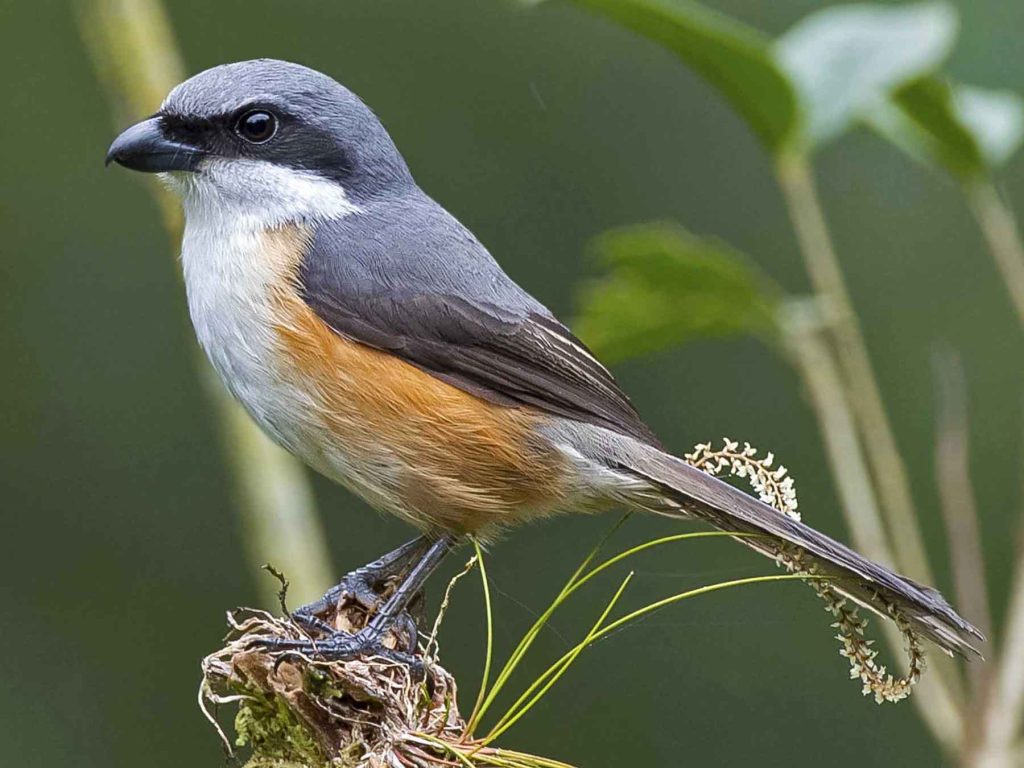
Source: ebird.org
The mountain shrike, also known as the grey-capped shrike, is a species of bird that belongs to the family Laniidae. It is native to the Philippines and is usually found in tropical moist montane forests and grasslands.
Unfortunately, its numbers are decreasing due to the loss of its natural habitat. This is because of the destruction of forests and grasslands in the Philippines due to unsustainable human activities, such as deforestation, land conversion, and land degradation.
As a result, the mountain shrike is becoming increasingly rare and is now classified as endangered. It is up to us to protect the mountain shrike and its habitat.
We must work together to reduce the destruction of forests and grasslands, and to promote sustainable development practices. We must also protect the natural resources of the Philippines so that the mountain shrike, and other wildlife, can continue to thrive.
By doing so, we can ensure that these beautiful creatures remain part of the natural landscape for generations to come.
| Kingdom | Animalia |
| Phylum | Chordata |
| Class | Aves |
| Order | Passeriformes |
| Family | Laniidae |
| Genus | Lanius |
| Species | L. validirostris |
2. Elegant Tit

The elegant tit is a beautiful species of bird belonging to the tit family, Paridae. This species can only be found in the Philippines, and nowhere else in the world. It is highly adapted to the unique environment of the islands and is an important part of the local ecosystem.
The elegant tit is characterized by its vibrant colors and distinctive markings. Its body is mostly a bright yellow, with a light grey head, and a black patch on its throat. Its wings and tail are black, and its bill is a deep blue.
The elegant tit is an active and agile bird, often seen flitting between trees in search of food. It is an omnivore, and its diet consists of insects, fruits, seeds, and small vertebrates.
It is a social bird, often seen in groups of two or three, although it can live and breed in larger flocks. Its call is a loud and melodic trill, and its song is a series of short, high-pitched notes.
The elegant tit is an important species in the Philippines and is highly valued by local communities. It plays a vital role in the pollination of plants and the dispersal of seeds, and its presence is an indication of a healthy ecosystem.
The species is classified as “near threatened” due to habitat destruction, but with the right conservation efforts, its population can be stabilized and protected.
| Kingdom | Animalia |
| Phylum | Chordata |
| Class | Aves |
| Order | Passeriformes |
| Family | Paridae |
| Genus | Pardaliparus |
| Species | P. elegans |
3. Yellowish White-Eye
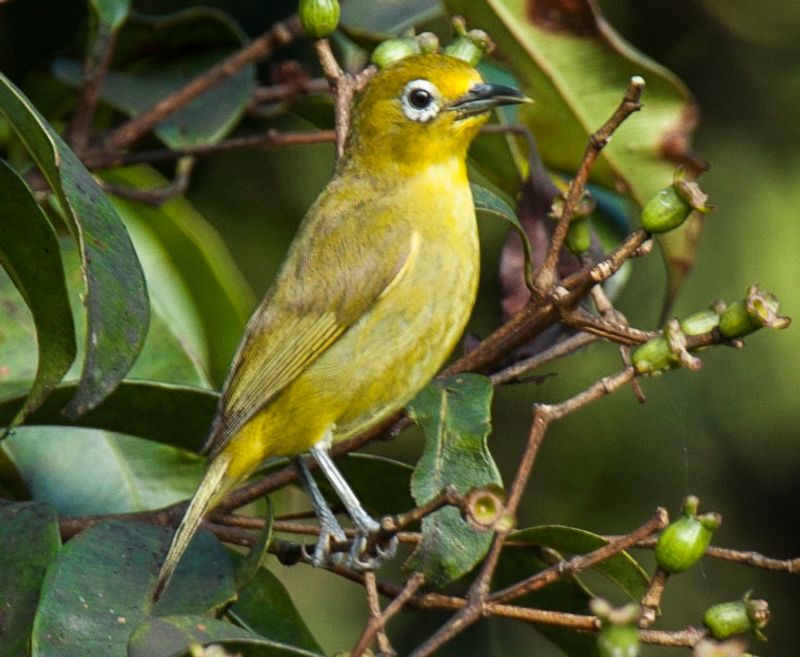
The yellowish white-eye or golden-yellow white-eye is a species of bird that belongs to the family Zosteropidae. This species of bird is only found in the Philippines and is not found anywhere else in the world. It is a small bird with yellow and white feathers, hence its name.
It prefers to live in subtropical or tropical moist lowland forests, which are areas of dense vegetation and high humidity. These birds feed on small insects, fruits, and nectar, and typically form large flocks that can be heard twittering away in the trees.
They are an important part of the Philippine ecosystem, providing an important source of food for other animals and helping to pollinate plants.
| Kingdom | Animalia |
| Phylum | Chordata |
| Class | Aves |
| Order | Passeriformes |
| Family | Zosteropidae |
| Genus | Zosterops |
| Species | Z. nigrorum |
4. Turquoise Flycatcher
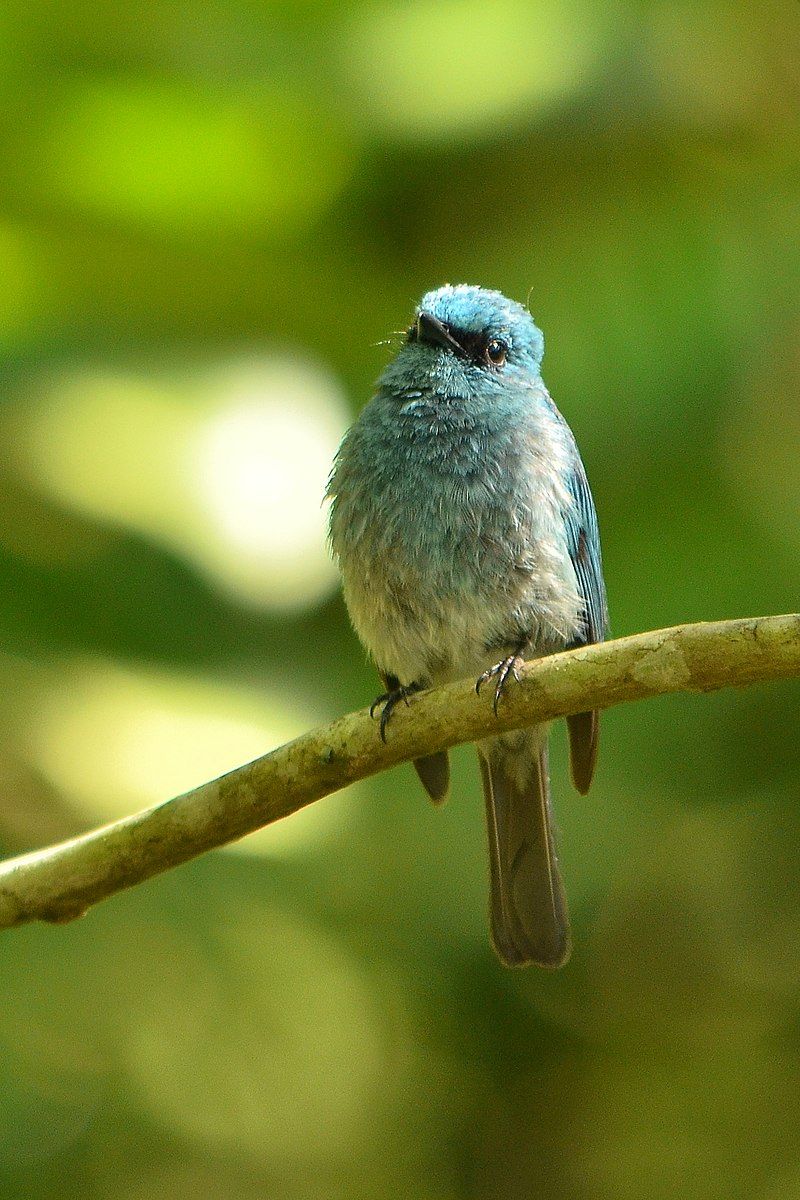
The turquoise flycatcher, also known as the island flycatcher, is a species of bird found in Indonesia and the Philippines. It belongs to the family Muscicapidae, one of the largest bird families consisting of more than 150 species.
The turquoise flycatcher is a brightly colored bird, with its upper parts being mainly turquoise in color, while its wings are a darker hue of blue.
Its underside is white and it has a black tail with a white tip. The turquoise flycatcher prefers to live in the subtropical or tropical moist montane forests of Indonesia and the Philippines.
These areas are known for their high humidity and dense vegetation, which provide the perfect habitat for this species. The turquoise flycatcher is a solitary bird, and it feeds primarily on insects.
It is also an adept hunter and uses its sharp eyesight to spot its prey. The turquoise flycatcher is not considered to be threatened, however, its population is declining due to deforestation and other human activities.
Conservation efforts are being made to protect this species, and its habitat is being protected under Indonesian and Philippine law.
The turquoise flycatcher is an important part of the tropical ecosystem, and its survival is essential for the proper functioning of tropical forests.
| Kingdom | Animalia |
| Phylum | Chordata |
| Class | Aves |
| Order | Passeriformes |
| Family | Muscicapidae |
| Genus | Eumyias |
| Species | E. panayensis |
5. Little Pied Flycatcher
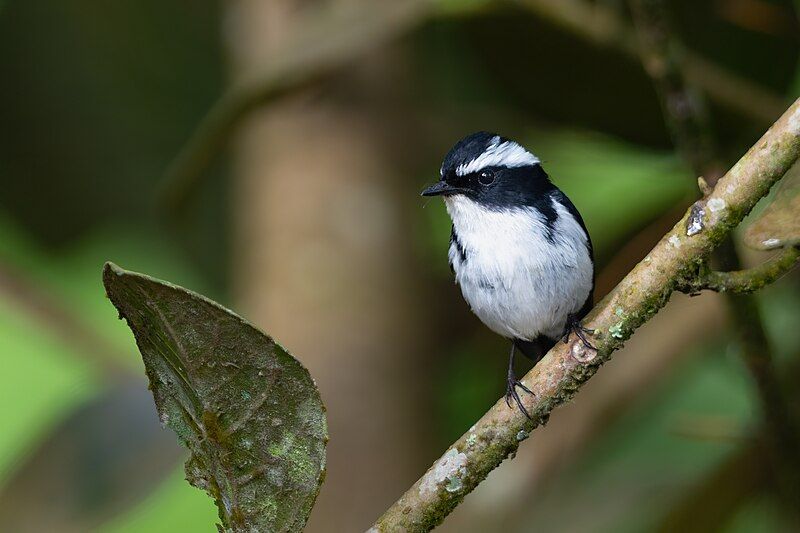
The little pied flycatcher is a species of bird found in the Indian Subcontinent and Southeast Asia.
It is a member of the Muscicapidae family, and its range extends across numerous countries in the region, including Bangladesh, Bhutan, Cambodia, India, Indonesia, Laos, Malaysia, Myanmar, Nepal, the Philippines, Thailand, and Vietnam. This bird is known for its small size and black and white plumage.
It has a black head, neck, and chest, while its back and wings are light grey. Its wings and tail are tipped with white, and its belly is a creamy yellow color. The little pied flycatcher inhabits a variety of habitats, from open woodlands to gardens and orchards.
It feeds mainly on insects, particularly flies and other small insects, which it catches in flight. It is known to use its wings to fan out leaves in search of its prey. The little pied flycatcher is an active and vocal bird.
It can often be seen darting around in search of food, and it sings a loud, twittering song in the mornings.
It is a social bird, often found in small family groups or in mixed-species flocks. The little pied flycatcher is a widespread species, with a large population that is not under any immediate threat.
The species is nonetheless vulnerable to habitat destruction and climate change, and conservation efforts are needed to ensure its continued survival.
| Kingdom | Animalia |
| Phylum | Chordata |
| Class | Aves |
| Order | Passeriformes |
| Family | Muscicapidae |
| Genus | Ficedula |
| Species | F. westermanni |
6. Striated Swallow
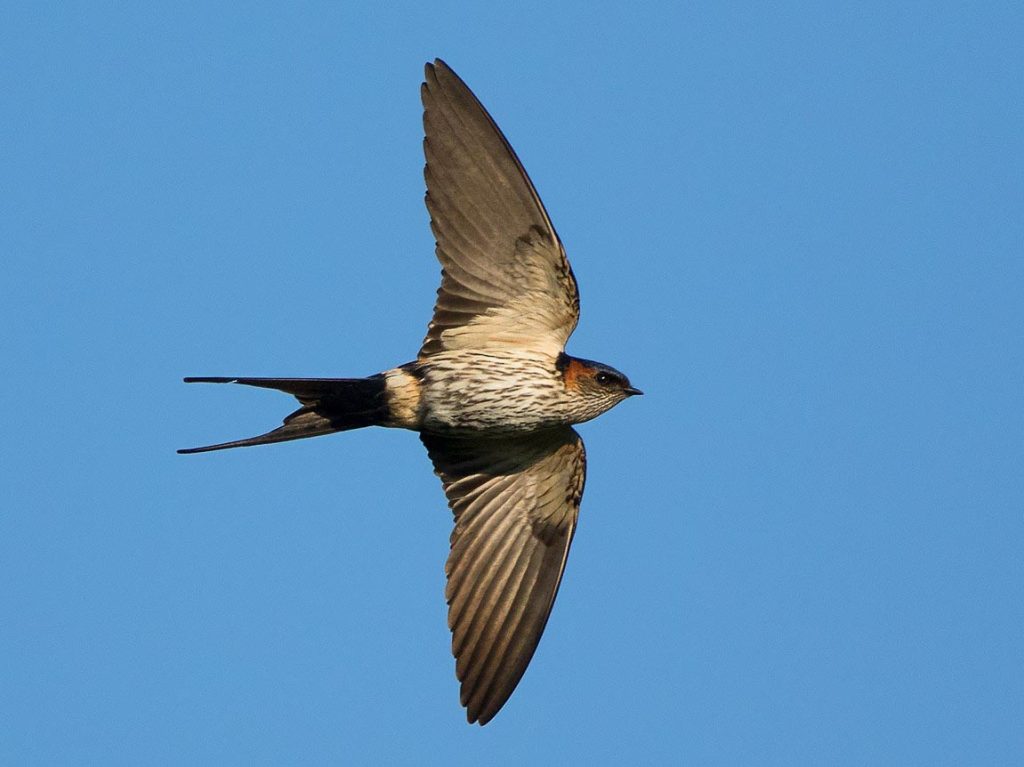
Source: ebird.org
The striated swallow is a species of bird that inhabits a wide range of areas in Southeastern Asia, northeastern India, and Taiwan. It prefers habitats that have open, hilly areas with clearings and cultivation.
This species of swallow is a sociable bird, often found in large flocks. The striated swallow was previously thought to be a subspecies of the red-rumped swallow. Despite this, ornithologists now consider it a distinct species due to its distinct appearance.
The striated swallow has a dark brown head with white cheeks and a white throat, and its upperparts are grey-brown. Its underparts are a yellowish-white color, with a rusty-brown rump and tail. In flight, its wings are brown with white stripes.
This distinctive pattern helps it to be easily identified.
| Kingdom | Animalia |
| Phylum | Chordata |
| Class | Aves |
| Order | Passeriformes |
| Family | Hirundinidae |
| Genus | Cecropis |
| Species | C. striolata |
7. Yellow-Crowned Flowerpecker
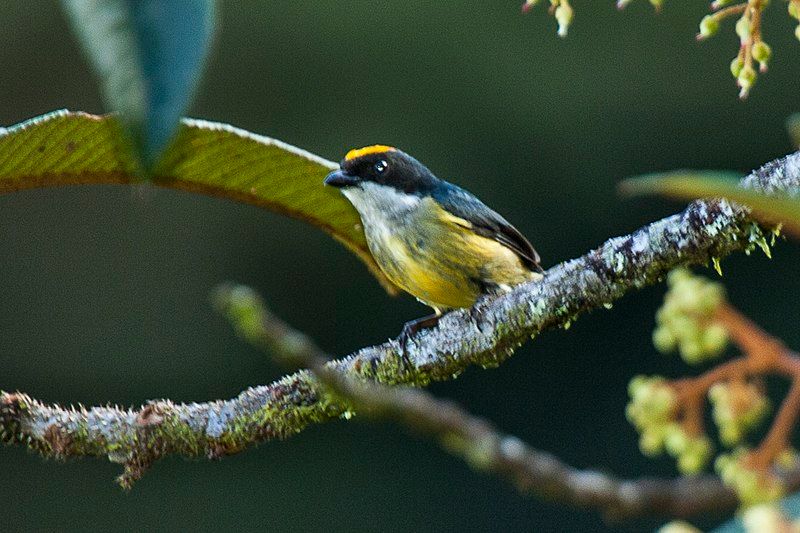
The yellow-crowned flowerpecker is a species of bird belonging to the family Dicaeidae, which is native to Luzon Island in the Philippines. Its habitat consists of tropical moist montane forests, which provide it with the food sources and shelter it needs to survive.
It is unique to Luzon Island and is not found anywhere else in the world. The yellow-crowned flowerpecker was once thought to be the same species as the flame-crowned flowerpecker, which is endemic to Mindanao.
However, it has since been determined that they are separate species, despite their similar appearances. The yellow-crowned flowerpecker is a critically endangered species due to deforestation and other threats facing its natural habitat.
Conservation efforts have been put in place to help protect its habitat and ensure its continued survival. These efforts include reforestation, creating protected areas, and raising awareness about the importance of protecting this species.
| Kingdom | Animalia |
| Phylum | Chordata |
| Class | Aves |
| Order | Passeriformes |
| Family | Dicaeidae |
| Genus | Dicaeum |
| Species | D. anthonyi |
8. Green-Backed Whistler

The green-backed whistler or olive-backed whistler is a type of bird that belongs to the Pachycephalidae family. It is a bird species that can only be found in the Philippines, and its natural habitats are tropical moist lowland forests and tropical moist montane forests.
These forests have a high humidity and temperatures that range from warm to hot year-round. The green-backed whistler or olive-backed whistler is usually found in the understory layer of the forest, where it finds its food sources and builds its nests.
It feeds on insects, fruits, and small animals that it finds in the tree canopy or on the forest floor.
The green-backed whistler or olive-backed whistler is also a good indicator of the health of the forest ecosystem, as its presence indicates that the habitat is suitable for other species of birds and animals.
| Kingdom | Animalia |
| Phylum | Chordata |
| Class | Aves |
| Order | Passeriformes |
| Family | Pachycephalidae |
| Genus | Pachycephala |
| Species | P. albiventris |
9. Luzon Water Redstart
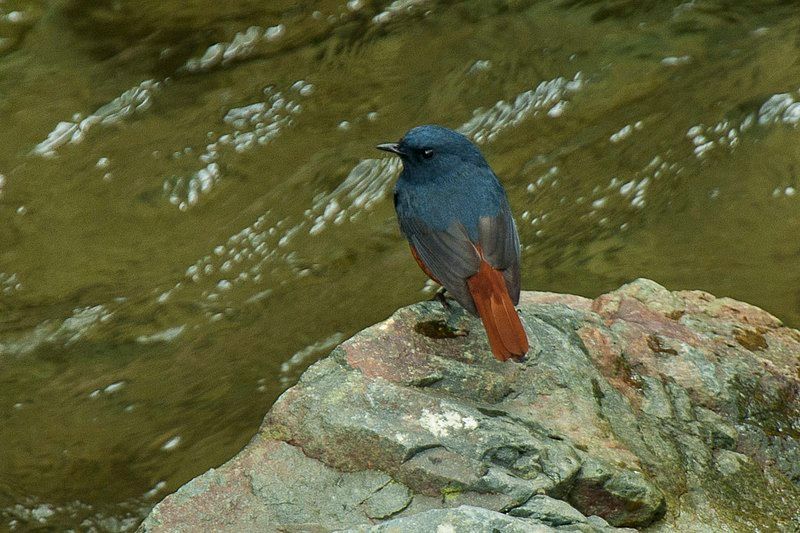
The Luzon water redstart is a species of bird that belongs to the family Muscicapidae. It is found primarily in the Philippines, on the island of Luzon, but has not been seen in Mindoro since 1965.
This species of bird is adapted to living in a variety of habitats, such as tropical moist lowland forests, subtropical or tropical moist montane forests, and near rivers.
This is beneficial to the species as it increases the chances that they will be able to find food and shelter in their natural environment. The Luzon water redstart is an interesting species of bird due to its limited range and its ability to live in various habitats.
| Kingdom | Animalia |
| Phylum | Chordata |
| Class | Aves |
| Order | Passeriformes |
| Family | Muscicapidae |
| Genus | Phoenicurus |
| Species | P. bicolor |
10. Chestnut-Faced Babbler
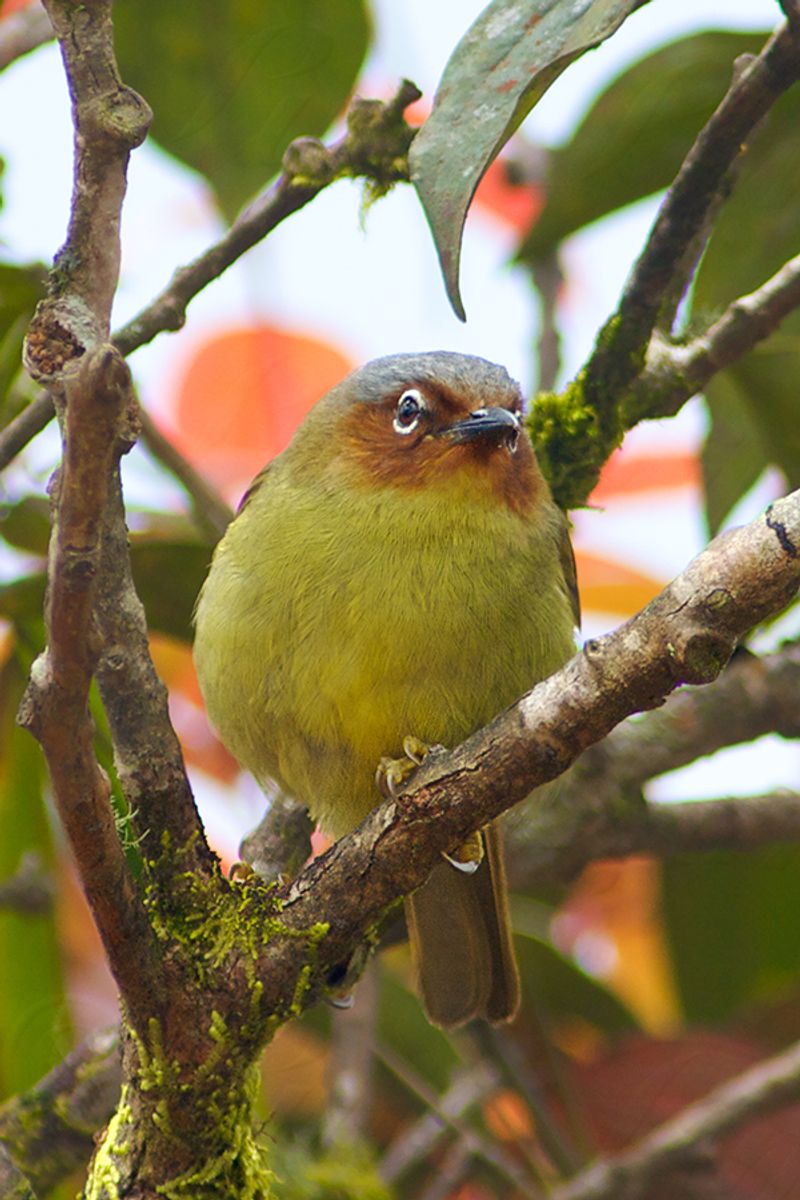
The Chestnut-faced Babbler is a species of bird found exclusively in the Philippines, specifically on the island of Luzon. It belongs to the white-eye family, Zosteropidae, which is made up of small birds with white rings around their eyes.
The Chestnut-faced Babbler is divided into two subspecies, Z. w. whiteheadi and Z. w. sorsogonensis. The first subspecies is found in northern and central Luzon, while the second is found in southeastern Luzon.
The Chestnut-faced Babbler has a distinctive chestnut-colored face, which is why it is named as such. This species is generally found in open woodlands and other disturbed habitats. They feed on insects and other small invertebrates, and nest in small colonies.
The Chestnut-faced Babbler is an important part of the native bird population of Luzon, and its conservation is important for the preservation of the island’s biodiversity.
| Kingdom | Animalia |
| Phylum | Chordata |
| Class | Aves |
| Order | Passeriformes |
| Family | Zosteropidae |
| Genus | Zosterornis |
| Species | Z. whiteheadi |
Conclusion
Birds play an important role in the culture and traditions of the Ifugao people. They are seen as symbols of good luck, health, and prosperity, and are often used in rituals and ceremonies.
Birds also reflect the beauty, resilience, and diversity of the Ifugao culture and environment. Therefore, it is important to protect and conserve these birds, in order to ensure the continuation of Ifugao culture.